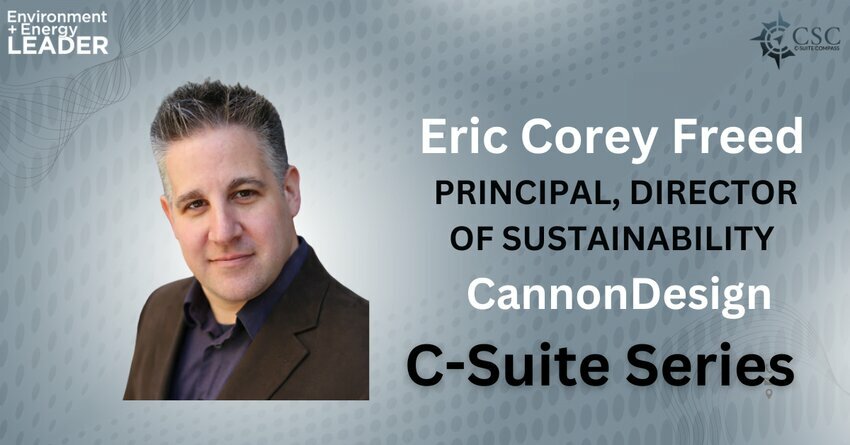
Eric Corey Freed, the Director of Sustainability discusses CannonDesign's approach to sustainability, which is integrated into every phase of their projects and includes internal targets for achieving net-zero and reducing embodied carbon. He also discuss the importance of promoting diversity and inclusion and creating a collaborative work environment. Touching on the company's ESG goals and initiatives, the benefits of establishing a corporate ESG strategy, and how to ensure transparency with stakeholders.
What trends can we expect to see over the next 5-10 years?
“If you want to build a ship, don’t drum up people to gather wood, divide the work, and give orders. Instead, teach them to yearn for the vast and endless sea.” – Antoine de Saint-Exupéry
Innovative, electric, eclectic
This has evolved after 30+ years in sustainability, but currently, it's about switching people from a Fixed Mindset, over to a Growth Mindset to see the abundance that a sustainability approach provides. Guilt has never been a great motivator, especially when it comes to how people live.
For example, we can achieve the following outcomes in our projects through sustainability:
For us, sustainability is not tacked onto the design, but rather something we integrate into every phase of the project, from the kickoff meeting, through design, and after construction.
Our internal sustainability targets include:
We follow an approach we call "Living-Centered Design" which is an empathic process toward meeting our client's needs (even the ones they don't know they have!)
Innovation and collaboration don't just happen. You need to invite it in, give permission to explore it, and allow everyone a chance to participate in it. That takes practice.
We listen for the phrases that kill collaboration and innovation (such as, "We’ve never done it that way) and have strategies to shift everyone in the room into a growth mindset. This opens their minds to other possibilities.
When you talk openly about problems and challenges, it invites in new ways to solving them.
Oh, the usual:
We normally do this for our clients, so it's weird and fun to do it for ourselves.
They are still evolving!
As Architects, we understand the process and how it can inform the solution. We used the goal setting to inform a few things:
From this we highlighted areas that we needed to start paying attention to. After all, at the core of sustainability work is the maxim, "If it gets measured, it gets managed."
In one sense, it shows we're "walking the talk." More importantly however, it gives us a picture into our impacts as a company and our ability to take responsibility for those impacts. This process is vital for us to understand how to address them, especially the areas (like Scope 3 emissions) that we do not really control.
Our facilitation and communication process covers this well, but also the distribution and sharing of our process on our internal intranet make it available to everyone here.
As Director of Sustainability, the buck stops here, so my team and I are continually engaging the entire staff in a change management process. All 1200+ CannonDesigners must be engaged to participate and contribute to our sustainability goals. This includes changing how we design and deliver our buildings to our clients, how we talk about our designs, and ultimately the life they will have after construction.
We're following a series of trends and drivers very closely, but specifically:
Eric Corey Freed is an award-winning architect, author, and global speaker. As Principal and Director of Sustainability for CannonDesign, he leads the healthcare, education, and commercial teams toward low-carbon, healthy, regenerative buildings for over 30 million square feet a year. For two decades, he was Founding Principal of organicARCHITECT, a visionary design leader in biophilic and regenerative design.
His past roles include Vice President of the International Living Future Institute and Chief Community Officer of EcoDistricts, both nonprofits pushing innovative new paradigms for deep green buildings and communities. He serves on the board of Design Museum Everywhere, whose mission is to “bring the transformative power of design to all.”
Eric is the author of 12 books, including "Green Building & Remodeling for Dummies” and "Circular Economy for Dummies." In 2012, he was named one of the 25 "Best Green Architecture Firms" in the US, and one of the "Top 10 Most Influential Green Architects." In 2017, he was named one of Build's American Architecture Top 25. He holds a prestigious LEED Fellow award from the US Green Building Council.
Connect with Corey